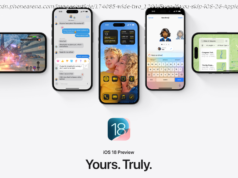Believed to be a lot faster and more capable than the existing computing systems, quantum computing is set to herald the next wave of the digital revo..
For Microsoft CEO Satya Nadella, quantum computing is among three technologies — the other two being Artificial Intelligence (AI) and Mixed Reality — that will soon disrupt the status quo, impacting our lives, communities and economies. Believed to be a lot faster and more capable than the existing computing systems, quantum computing is set to herald the next wave of the digital revolution. Researchers at Microsoft are busy writing the software to build a scalable computer that will help humanity unlock solutions to problems in areas such as clean energy, global warming, materials design and much more — including solving the mysteries of our universe. If all goes well, Microsoft is confident about having one such scalable super machine within the next five years. Based on quantum bits, the computer will not use classical bits but qubits which are not limited to binary and can have properties of 0 and 1 simultaneously, thus trying every possible number and sequence simultaneously to unlock vast amounts of data. The current bits in computers store information as either 1 or 0, thus limiting the potential to make sense when faced with gigantic volumes of data. „We are looking at a five-year time-frame to build a quantum computer and what we need are roughly 100-200 good qubits with a low-error rate,“ Krysta Svore, Principal Research Manager, Microsoft Quantum Computing, told IANS here. Microsoft has also partnered with various stakeholders, including universities and governments, to realise the dream. „We need a global effort for quantum research. There are quantum computers but they are small-scale ones and we are trying to push into finding better qubits,“ added Svore, who leads the Microsoft Quantum-Redmond (QuArC) group. Not just Microsoft but several other tech giants like IBM, Google and Intel have joined the race to build a scalable quantum computer. Google has unveiled „Bristlecone“ — a quantum computing chip with 72 qubits. IBM announced a 50-qubit processor last year. A quantum computer can solve complex problems that would otherwise take billions of years for today’s computers to solve. This has massive implications for research in health care, energy, environmental systems, smart materials and more. Microsoft, however, has an added advantage: Its quantum system can integrate seamlessly with its highly-secure Azure Cloud. Over a period of time, Microsoft has built a team comprising some of the best minds in quantum physics, mathematics, computer science and engineering. To achieve its goal of creating a scalable quantum computer, the company first started by creating the raw materials necessary to make „topological“ quantum devices. Microsoft is the only major tech company attempting to build „topological“ qubits which aim to significantly reduce any interference at a sub-atomic level that might affect the machine. With this approach, the computational qubits will be „corrected“ by other qubits. The team then grew specialised nanowires that can be used to make qubits. The researchers created atomically thin conducting layers with exotic topological properties to realise a fully scalable quantum computer. Microsoft today runs several labs around the world that specialise in the fabrication of quantum devices. According to the company, the infrastructure allows for the efficient mounting, wiring and cooling of these devices which, in turn, supports rapid prototyping, characterisation and exploration. These devices operate at temperatures almost 200 times colder than the farthest reaches of outer space. To help quantum developers build applications and algorithms, the company has also released the Quantum Development Kit — a set of enterprise-grade tools to write, debug and optimise quantum code. The company is also building a community of quantum developers. „Nature computes using quantum, such as protein folding and several other complex mechanisms, and it does it quickly. If nature can do this, why can’t we?,“ said Svore. In his book „Hit Refresh“, Nadella has shed light on the ongoing activities and future plans to build new computational methods for programming the quantum computer, because a problem that would take today’s machines billions of years to solve could be completed by a quantum computer in minutes, hours or days. „At Microsoft, we’re on the cusp of empowering a quantum revolution with our unique, topological approach,“ Nadella says, hoping that „quantum computing will make AI even more intelligent“.






